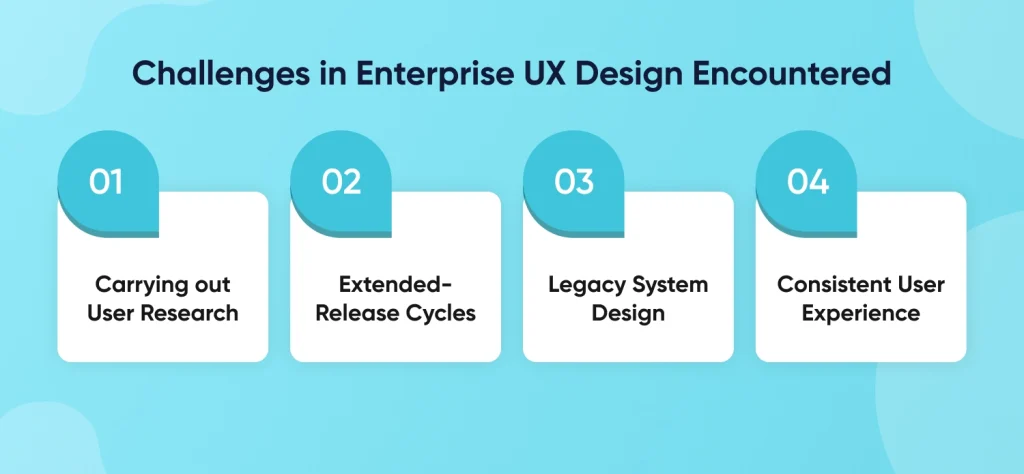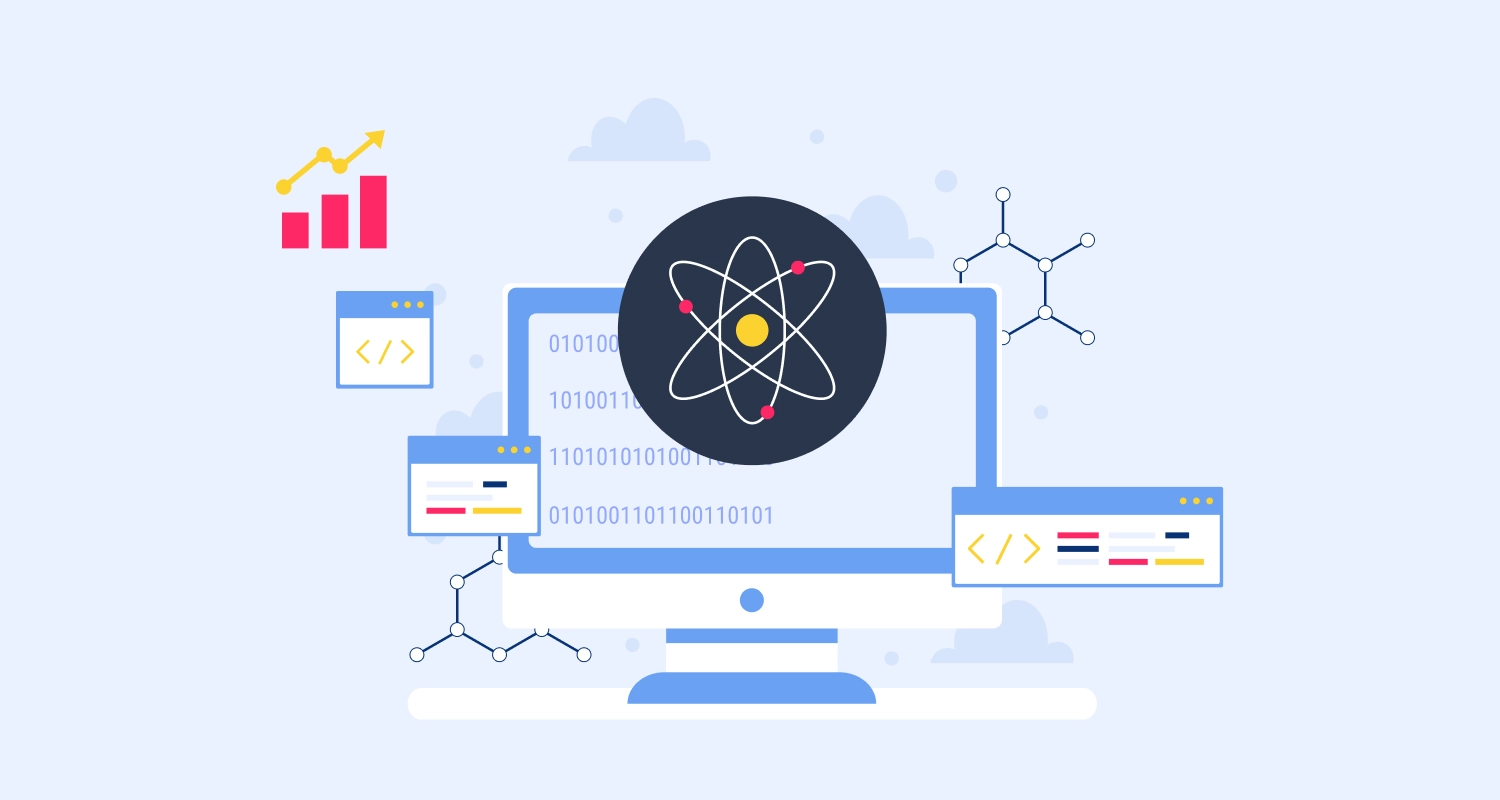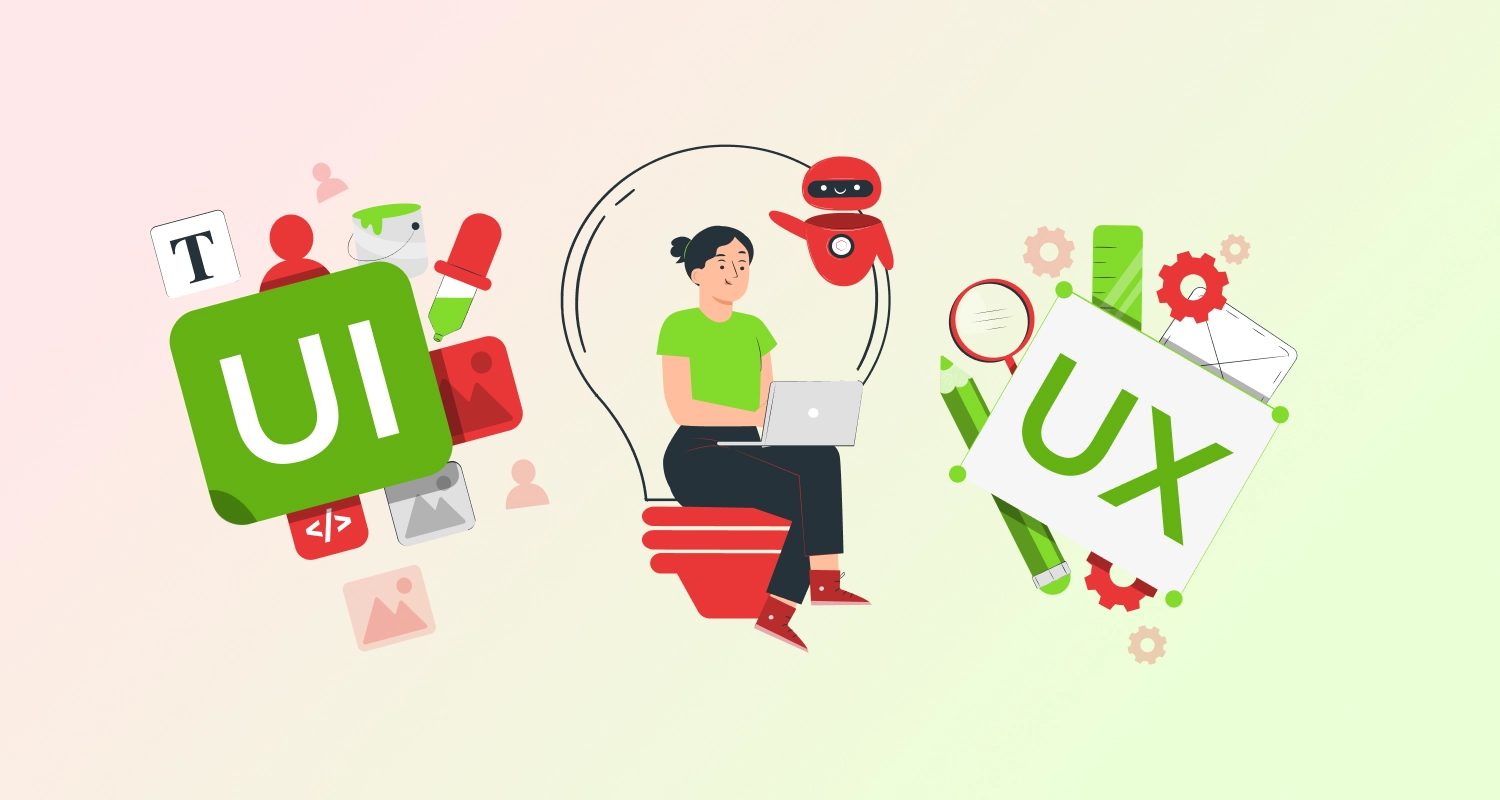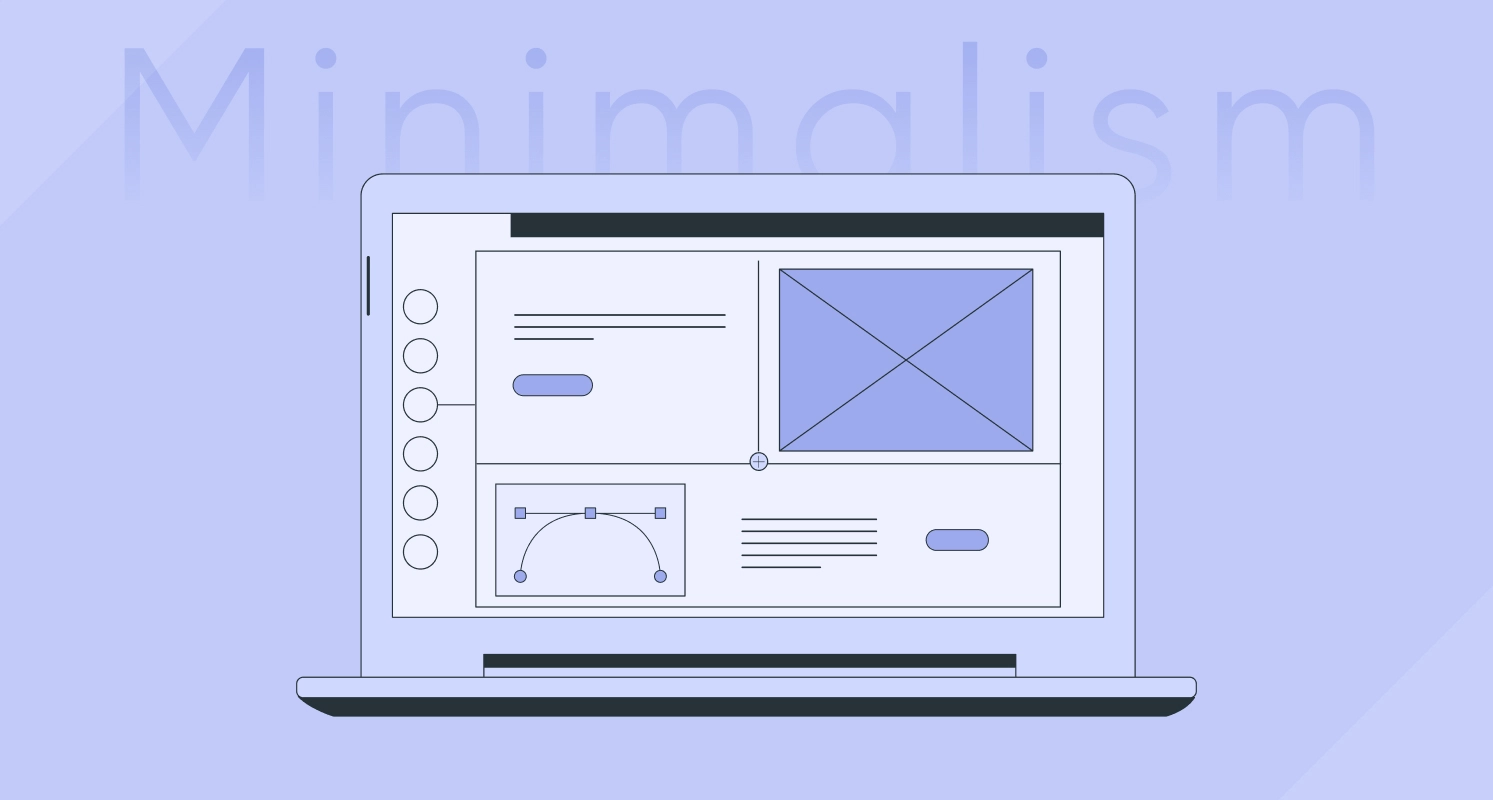Applications that support internal processes are frequently found in large enterprises. The purpose of these internal solutions is to simplify and ease employees’ work. However, they rarely hit the mark. We typically hear about instances where such solutions turn into issues.
Why do these kinds of situations happen?
Mostly because businesses fall behind in terms of enterprise UX design. Mobile app design services are not given the same priority as consumer solutions. Between the two, there is a significant change in priorities, objectives, and quality. What benefits can one get from investing in enterprise app UX design seems to be the fundamental question.
Remarkably, quite a bit! Enterprise user experience design has an impact on all of these factors, including sales, productivity, and staff satisfaction.
So let’s discover more about this significant although little-known field. In this blog, we’ll go over what is enterprise UX design, how it differs, what problems it presents, and things to think about while designing for businesses.
What is Enterprise User Experience and Why it Matters?
The design of corporate products, or products for people at work, is referred to as enterprise user experience (UX). The users are not the general public; rather, they are employees of businesses. As a result, these solutions are customized for various industries, professions, or businesses. Intranets, CRM, ERP, and HR management systems are a few examples.
Businesses need to prioritize enterprise user experience because it has a direct impact on the bottom line. Organizational productivity increases when workers are equipped with the tools they need to do their jobs more effectively. Good business is predicated on good enterprise user experience (UX).
Why Does UI for Enterprise Applications Matter?
Enterprise software frequently prioritizes utility over usability and pays little attention to either. As they take end-user behavior into account and create more usable products, organizations can benefit from high-quality corporate UX/UI design services in many ways. The reason enterprise UX matters is that it results in:
Enhanced output: Workers utilize enterprise software for eight to ten hours per day. Employee performance improves when such systems are revamped to be quick and simple to use. They also save time thanks to time-saving navigation and optimized user journeys. Consequently, it helps to raise productivity.
Less complicated: Enterprise UX design facilitates an easier understanding of information-rich interfaces by utilizing dashboards and data visualization. Users can swiftly obtain important information and make more intelligent choices.
Better internal communication: Effective cooperation depends on effective internal communication. Building in the modern mixed work culture is inevitable. By providing message features that are comparable to those found in customer-focused products, enterprise UX design can enhance internal communications.

How is Enterprise UX different from Consumer UX?
Enterprise UX is a special combination of strategic business alignment and in-depth user comprehension. It’s the place where complex organizational goals and nuanced user needs converge, negotiating a terrain molded by the demands of various stakeholders and strict IT limitations. This specialized approach is in contrast to consumer UX, as shown in the table below:
| Enterprise UX | Consumer UX |
| Intended for a business setting. | Designed to accomplish a particular objective. |
| More intricate and able to accommodate several users and job roles. | Easy to understand and serves a single purpose. |
| Clients and users are distinct individuals. | Purchasers are consumers. |
| Administrator-configured. | Configured by the customers themselves. |
| The difficult design process in contrast to apps for consumers. | Comparatively easier to design. |
| Users are forced to follow corporate policies and have no other option. | It is up to the users to select and use different apps. |
| As users engage with the app all day, efficiency is essential. | While efficiency matters, it’s not as crucial as it is for enterprise programs. |
| Deals with a greater scope, scale, and volume of data and transactions. | Focuses on smaller-scale transactions, data, and scope. |
| Increased limitations and more stringent security specifications. | Fewer limitations and less demanding security specifications. |
These are a few significant distinctions between consumer and enterprise user experiences. The distinction between the two is becoming less clear, though. Consumers will no longer tolerate subpar user experiences. Consequently, businesses are concentrating on making corporate apps more like consumer apps in terms of convenience. Even if it is executed in a far more complex way, designers are managing to strike a balance.
Key Considerations to Master Enterprise Software UX Design
Everybody benefits from a well-thought-out company UX design: owners save money, employees perform their regular activities with greater comfort and fun, and employees get happier. But refined procedures yield significant design. If you lack knowledge in this area, you can utilize the following tips while collaborating with enterprise UX:
Get Involved in the Enterprise Designers
Undoubtedly, seeing how people operate is the best way to create a fantastic enterprise user experience. A few minutes of this kind of observation can provide you with a lot of useful insight on how to improve the design of one or more solutions. Additionally, you gain a deeper comprehension of the procedures they oversee and their workflow.
However, the reality is that team members, even corporate UX designers, are not always able to visit an organization and observe the operations from within physically. Next, you ought to carry out an extensive user study that includes the following:
- Concerns or problems you think people are having that you need to fix
- Solutions to take to eliminate the problems
- Outcomes you hope to attain (for users and organization) with these solutions
Use tried-and-true methods such as personas, chief executive interviews, and user journeys.
Set Priorities
You can order the concepts you generated based on your audience research for your future enterprise UX. It’s critical since working with so much data will make it easy to lose sight of the main idea. To prevent this, you can compare the effort required to implement a particular idea to how it would affect user demands and the needs of the firm as a whole.
Challenges in Enterprise UX Design Encountered

Creating user experiences for enterprise systems and apps presents several issues that designers frequently encounter:
1. Carrying out User Research
Because corporate solutions’ customers and consumers are different, UX designers face a special set of challenges while designing for them. In an organizational structure, the decision of which software applications to purchase usually rests with upper or mid-level management.
This puts up a barrier to undertaking UX research because designers deal more with buyers or executives than end users. As a result, executives frequently have a hard time understanding the needs of the consumers, which puts designers in a challenging situation.
Businesses should help some end users and UX designers communicate effectively to overcome this obstacle. In this manner, they might engage with UX designers for research purposes.
2. Extended-Release Cycles
Years may pass between designing and creating an enterprise system, particularly if a legacy system constrains one. It’s because minor changes must be cautiously integrated and tested to prevent breaking already-running programs.
Because of the drawn-out approach, new UX concepts may become old by the time they are deployed, which could cause future usability problems.
Designers should have a clear plan and involve stakeholders early in the design process to get their consent to streamline the process. It can also be beneficial to include the product roadmap early on so that the UX designers can make appropriate plans.
3. Legacy System Design
Both large and small businesses with less than 100 employees frequently use antiquated computer programs and systems. A few of these outdated systems were in use before user design being given top attention. Because of their experience with these systems and years of training, employees could be reluctant to let them go. In certain cases, redesigning them is feasible, but in other cases, there are no options.
So, UX designers account for resistance to change while revamping legacy technologies. To find out what users liked and didn’t like about the previous system, they ought to ask for user input. The user experience can be improved and goodwill can be fostered by incorporating this feedback to simplify difficulties.
4. Consistent User Experience
Creating Business Application Designs Maintaining cohesive and consistent designs across several applications is difficult when dealing with UXs. Every development team frequently designs its user interface (UX) without taking into account how switching between different programs may affect worker productivity.
UX inconsistencies can be seen across a variety of areas, including graphical components (colors, icons), information architecture, workflows, behavior and interactions (search fields, form validation), and terminology.
Even though these discrepancies might not seem like much, they have important ramifications. Inconsistent user experience (UX) results in a subpar user experience, a rise in user errors, and a decline in worker productivity and efficiency.
Enterprise UX Design Trends in 2025
Businesses are increasingly focusing more on enhancing user experiences by using the power of AI in UX design, emphasizing accessibility, utilizing augmented reality, and utilizing data-driven personalization. Additionally, enterprise apps these days concentrate on updating the user interface (UI) with components like typography, styles, and animations. This is a quick look at the UX trends that will rule business software by 2025 and beyond.
- Augmented Reality (AR) and Virtual Reality (VR)
- Integrating AI technology
- Using animated illustrations
- Enabling 3D graphics
You read our blog on UI/UX design trends to get detailed information on each trend.
How to Assess the User Experience Success of Your Enterprise
Step 1: Align Metrics with UX Strategy
Understanding the relationship between measures and the corresponding success indicators is crucial. A clearly defined UX strategy will specify which metrics correspond with particular success indicators and how they relate to particular tasks.
Step 2: Protect Against Ambiguity
Businesses are prone to metric misunderstanding due to complex processes and a range of stakeholder expectations. It is possible to avoid any ambiguities by developing a strong UX strategy early on.
Step 3: Align Metrics with Business Goals
Adjust UX metrics to align with corporate objectives. For example, if a company wants to reduce its internal training costs, tracking task completion times or success rates before and after software can provide useful information.
Step 4: Converting Metrics from Business Goals
This is a mutually beneficial partnership. Business goals influence metric selection, and vice versa; business goals should be improved and realigned by the insights gained from these measurements. Design solutions ought to also be in line with these objectives.
Conclusion
To increase user productivity, profitability, and efficiency, enterprise user experience (UX) is essential. Businesses can meet and surpass user expectations, improve business operations, and foster long-term success by incorporating UX principles into the design process.
Therefore, think about speaking with specialists who know this field if you intend to develop a new enterprise application.
CMARIX is the top enterprise app development company that employs professional and skilled UX designers. We have assisted businesses in creating user experiences that complement their current ecosystem.
Frequently Asked Questions
What Is Enterprise User Experience Design?
At the intersection of increasing user enjoyment and efficiency in work contexts is enterprise UX design. Designing for corporate software solutions and B2B interfaces, as opposed to standard consumer UX, poses particular difficulties and calls for particular approaches that are crucial for big businesses.
What Are Some Typical Enterprise UX Issues You Encounter?
Here are a few issues enterprise UX encounters:
Matching product objectives with business goals
The buyer isn’t the final user
Insufficient executive support
Comprehending the business
Cooperation is harder than it looks
Making the switch from old systems to new ones
Using a simple user interface
What Makes for a Great Enterprise User Experience?
Great enterprise UX research is the foundation of exceptional enterprise UX. A designer must conduct thorough research to fully comprehend the user and their demands before creating a fantastic product. When it comes to enterprise goods, the research phase is especially crucial because of the tool’s intrinsic complexity and significance in achieving organizational objectives.
Who Are the Primary Users of the Enterprise System?
Education, finance and accounting, healthcare, manufacturing, retail and commerce, building and construction, business intelligence, professional services, and more are among the industries that employ ERP systems most frequently.







